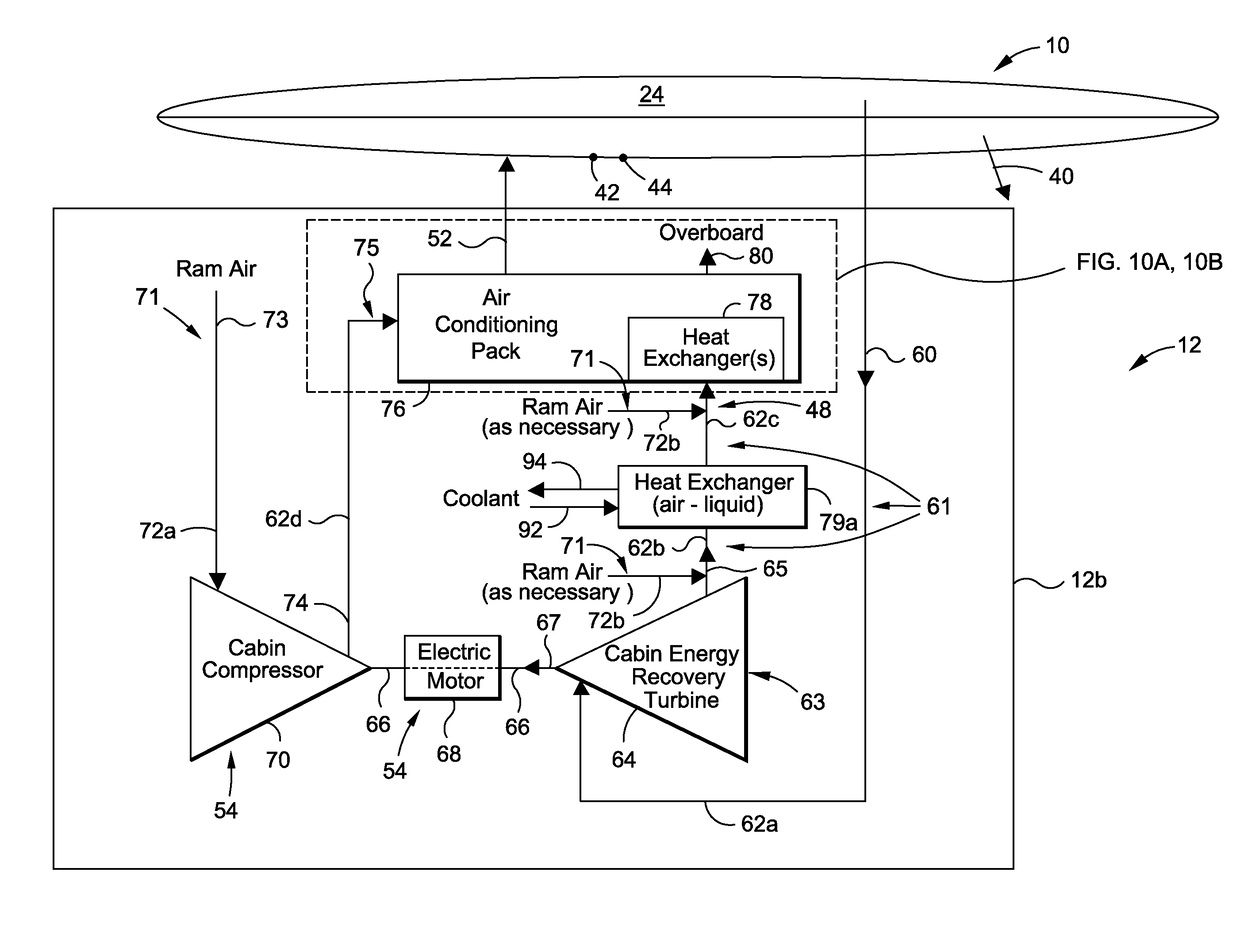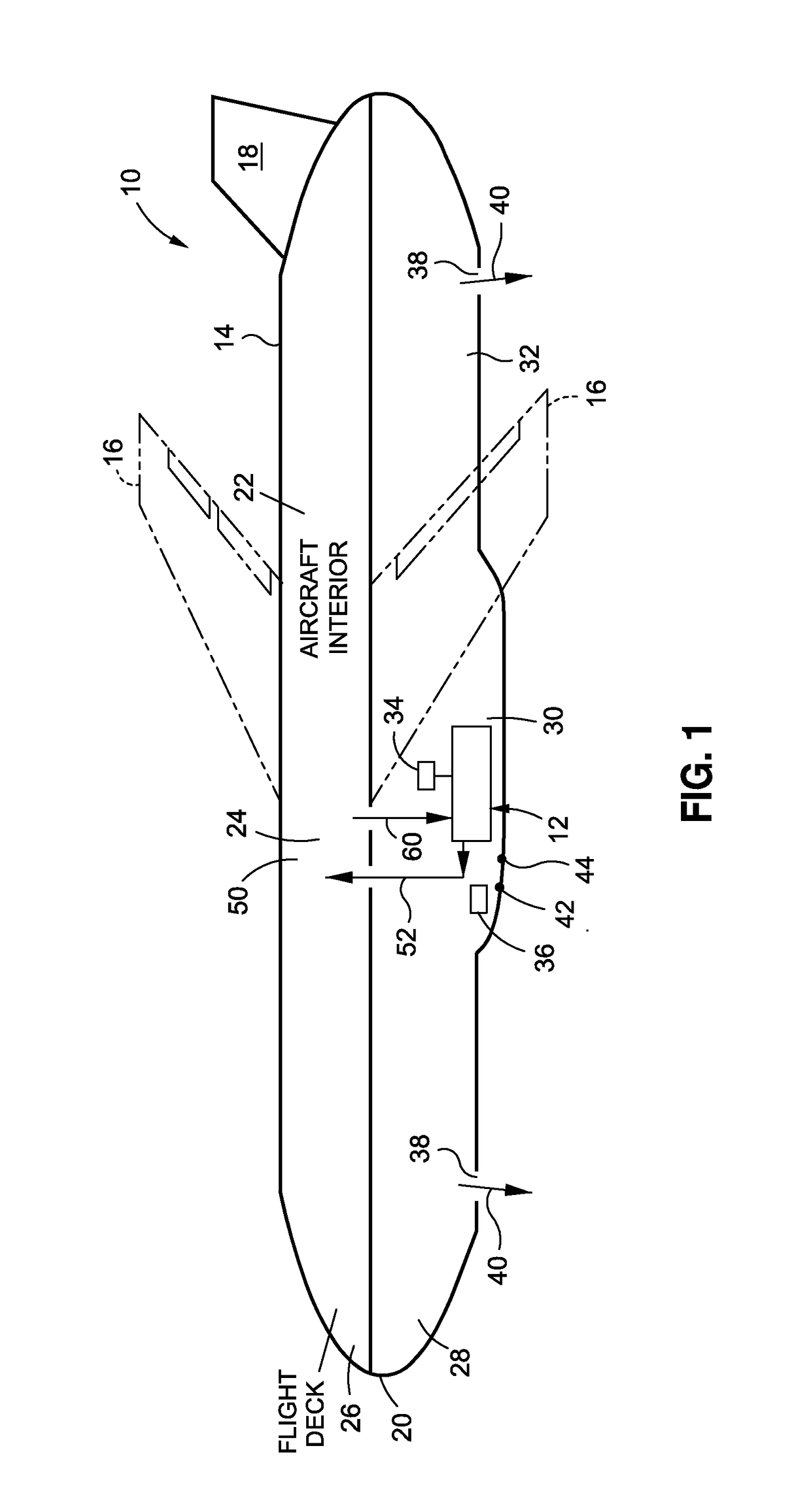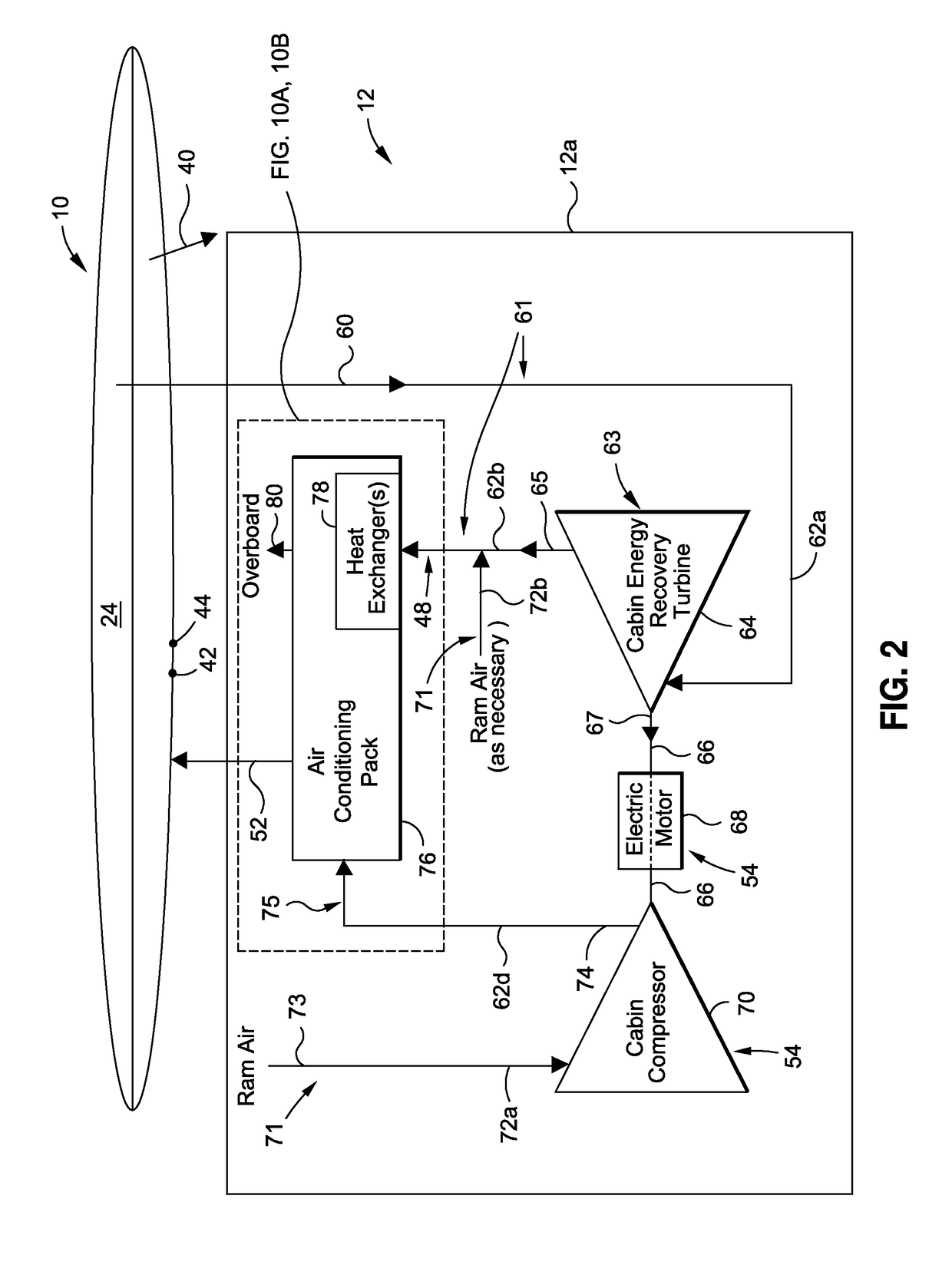Aircraft air conditioning systems and methods
a technology for air conditioning systems and aircraft, applied in the direction of energy-efficient board measures, air-treatment apparatus arrangements, weight reduction, etc., can solve the problems of increased cost, complexity, weight, and inefficiency of aircraft air conditioning systems, and achieve the effect of improving the air conditioning system and the air conditioning system
- Summary
- Abstract
- Description
- Claims
- Application Information
AI Technical Summary
Benefits of technology
Problems solved by technology
Method used
Image
Examples
Embodiment Construction
[0029]Disclosed embodiments will now be described more fully hereinafter with reference to the accompanying drawings, in which some, but not all of the disclosed embodiments are shown. Indeed, several different embodiments may be provided and should not be construed as limited to the embodiments set forth herein. Rather, these embodiments are provided so that this disclosure will be thorough and complete and will fully convey the scope of the disclosure to those skilled in the art.
[0030]Now referring to the Figures, FIG. 1 is an illustration of a schematic diagram of an aircraft 10 having one of the embodiments of an aircraft air conditioning system 12 of the disclosure. As shown in FIG. 1, the aircraft 10 may comprise a fuselage 14, a pair of wings 16, a tail 18, and a nose 20. The fuselage 14 defines an aircraft interior 22 (see FIG. 1). As further shown in FIG. 1, the aircraft interior 22 may comprise an aircraft cabin 24 preferably for passengers or cargo, a flight deck 26 prefe...
PUM
 Login to View More
Login to View More Abstract
Description
Claims
Application Information
 Login to View More
Login to View More - R&D
- Intellectual Property
- Life Sciences
- Materials
- Tech Scout
- Unparalleled Data Quality
- Higher Quality Content
- 60% Fewer Hallucinations
Browse by: Latest US Patents, China's latest patents, Technical Efficacy Thesaurus, Application Domain, Technology Topic, Popular Technical Reports.
© 2025 PatSnap. All rights reserved.Legal|Privacy policy|Modern Slavery Act Transparency Statement|Sitemap|About US| Contact US: help@patsnap.com



